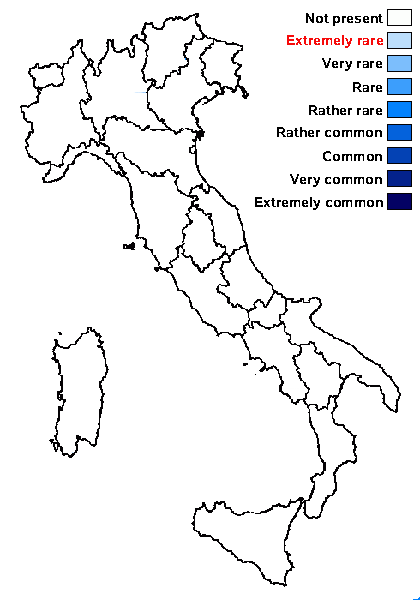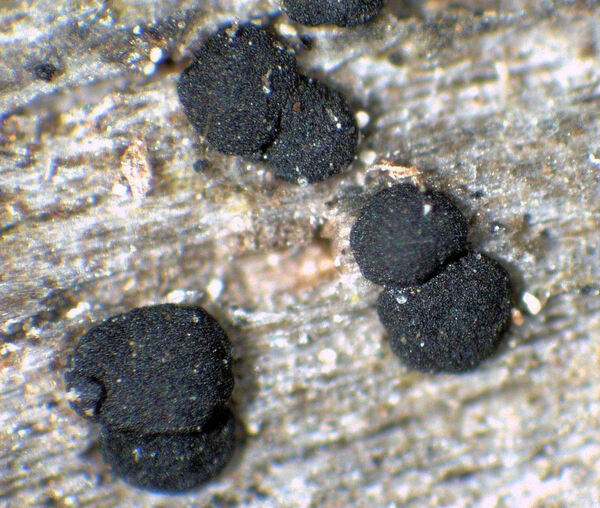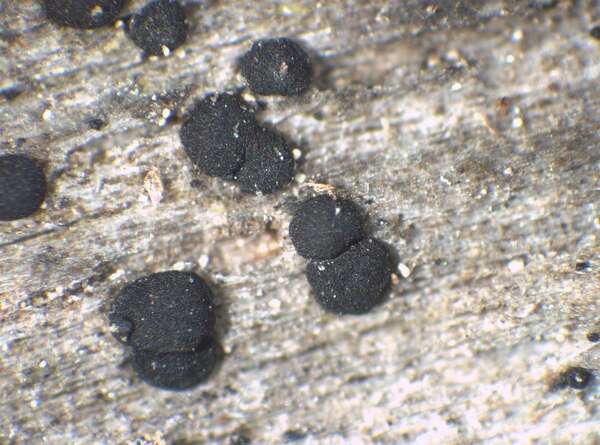Lecidea plebeja Nyl.
Flora, 48: 148, 1865
Synonyms: Lecidea enalliza Nyl.
Distribution:
Description: Thallus crustose, mostly endosubstratic and poorly evident, rarely very thinly episubstratic, minutely verruculose and olive-green or grey-green. Apothecia lecideine, black, circular in outline, 0.2-0.5 mm across, adnate, with a long-time flat to finally convex disc and a thin, often finally excluded proper margin. Proper exciple brown-black or reddish black, paler in outer part, the cells 3-5 μm wide, with a dark brown apical cap; epithecium olive-brown or yellow-brown, K-, N-; hymenium pale brown, 45-50 μm high, I+ blue turning reddish; paraphyses coherent, 1-2 μm thick at mid-level, the apical cells up to 3 μm wide, distinctly brown-capped; hypothecium brown to reddish brown. Asci 8-spored, narrowly clavate, Micarea-type. Ascospores 1-celled, hyaline, narrowly ellipsoid or subfusiform, 6.5-11 x 2-3 μm. Photobiont chlorococcoid. Spot tests: thallus K-, C-, KC-, P-, UV-. Chemistry: without lichen substances.
Note: a probably holarctic, boreal to temperate-montane species based on a type from Finland, found on wood and bark of conifers (Picea), with a few records from the Eastern Alps; to be looked for in the Italian Alps. According to Ertz et al. (2013), this species likely belongs to an undescribed genus in the Malmideaceae, a sister lineage of Pilocarpaceae.
Growth form: Crustose
Substrata: bark and lignum
Photobiont: green algae other than Trentepohlia
Reproductive strategy: mainly sexual

Predictive model
Growth form: Crustose
Substrata: bark and lignum
Photobiont: green algae other than Trentepohlia
Reproductive strategy: mainly sexual

Predictive model
 Index Fungorum
Index Fungorum
 GBIF
GBIF




